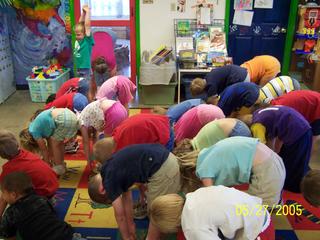I’ve had this report for a couple of months. I thought it was more interesting now than in May because now is when kids go back to school. Actually, I don’t think it’s interesting at all. I know as an educator I’m supposed to find this stuff fascinating, but in all honesty, I think it’s terribly dull. I suppose it’s dull because what this report does is line up statistics so that more money can be poured into an education program that is simply not working, and I find that more of the same.
I have a lot of thoughts on why it’s not working, but that’s not applicable here. The question stated here is are children ready for school? What we find out is that poor undereducated families have a rougher time understanding what schools are supposed to be doing than affluent, educated people. Is that worth millions of dollars to find out? I think it’s a given. But here’s the report:
Ready for school?
As States Grapple with How to Prepare Children to Succeed in School, a Report Last Spring Shows How 17 States are Using Indicators to Track Progress.
Research shows that too many young children enter kindergarten with physical, social, emotional and cognitive deficits that could have been minimized or eliminated through early intervention. This report entitled Getting Ready: Findings from the National SchoolReadiness Indicators Initiative, shows how identifying indicators ofschool readiness and tracking progress on those measures can lead tomore effective policies and investments in early childhood.
The National School Readiness Indicators Initiative provides a set of indicators that policy makers can use to monitor school readiness and early school success,” said Ron Haskins, Senior Fellow, Economic Studies Department, Brookings Institution.
The states participating in the Initiative are: Arizona, Arkansas,California, Colorado, Connecticut, Kansas, Kentucky, Maine,Massachusetts, Missouri, New Hampshire, New Jersey, Ohio, Rhode Island,Vermont, Virginia and Wisconsin.
“State policy makers play a critical role in allocating resources tosupport the school readiness of young children. Increasingly, statepolicy makers are asking for results-based accountability in makingtheir funding decisions.
While policy makers may recognize the importance of early learning and school readiness, they also need measurable indicators that enable them to track progress,” according to Lisbeth Schorr, Director of the Project on Effective Interventions at Harvard University. Each state developed indicators that were based on the child development research and that fit their policy context.
The states formed teams made up of representatives from governors’ offices, state legislators, state school officers, heads of departments of education, health, and social services, child advocates, researchers, and business leaders.
The Initiative’s web site at www.GettingReady.org highlights the individual state reports on school readiness produced by each of the 17 states. In order to share the information widely among key policy makers, the Initiative partnered with five national organizations: the National Governors Association Center for Best Practices, the National Conference of State Legislators, the Council of Chief State School Officers, the Education Commission of the States and the National Association for the Education of Young Children.
Based on the experience of the 17 states, a core set of commonindicators was identified that can be used to measure progress towards school readiness and early school success. The school readiness indicators that are included in this report were selected because they have the power to inform state policy action on behalf of youngchildren.
They emphasize the importance of physical health, economicwell-being, child development and supports for families. The core set of indicators are attached and address all the domains of child development (physical development, social and emotional, language and literacy, approaches to learning and cognitive development).
Indicators are grouped according to key areas that can be affected by policy action, including:
Ready Children: Describe characteristics of children’s health anddevelopment.
Ready Families: Describe children’s family context and home environment.
Ready Communities: Describe the community resources and supportsavailable to families with young children.
Ready Services: Describe the availability, quality, and affordability of proven programs that influence child development and school readiness, including health and early education services.
Ready Schools: Describe critical elements of schools that influencechild development and school success.
“The regular tracking of school readiness indicators enables policymakers and community leaders to identify areas most in need of intervention, track the results of investments, and monitor trends overtime,” said Elizabeth Burke Bryant, Executive Director of Rhode Island KIDS COUNT.
“The goal of the School Readiness Indicators Initiative was to develop indicators not just for data’s sake, but to inform and influence policy decisions to improve school readiness.”


